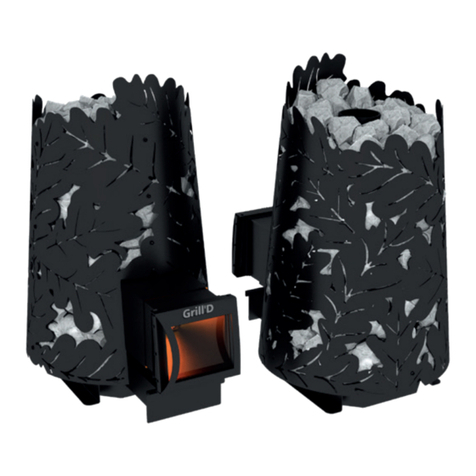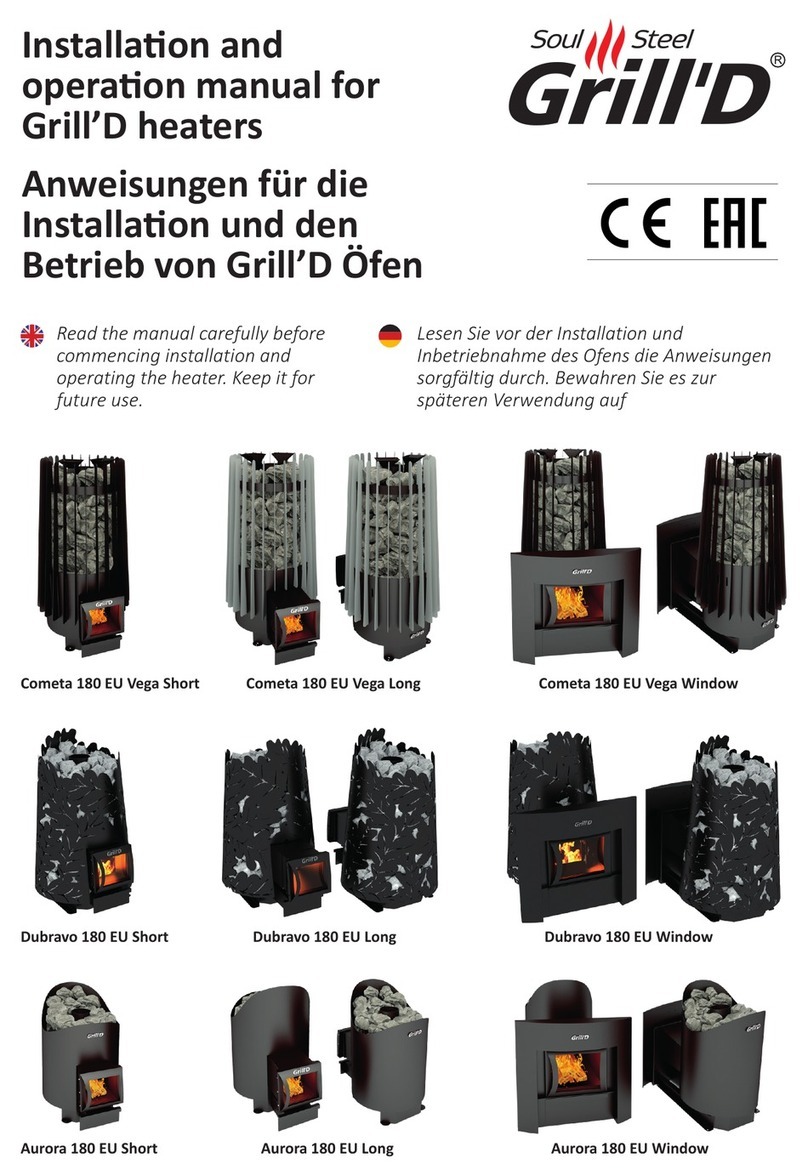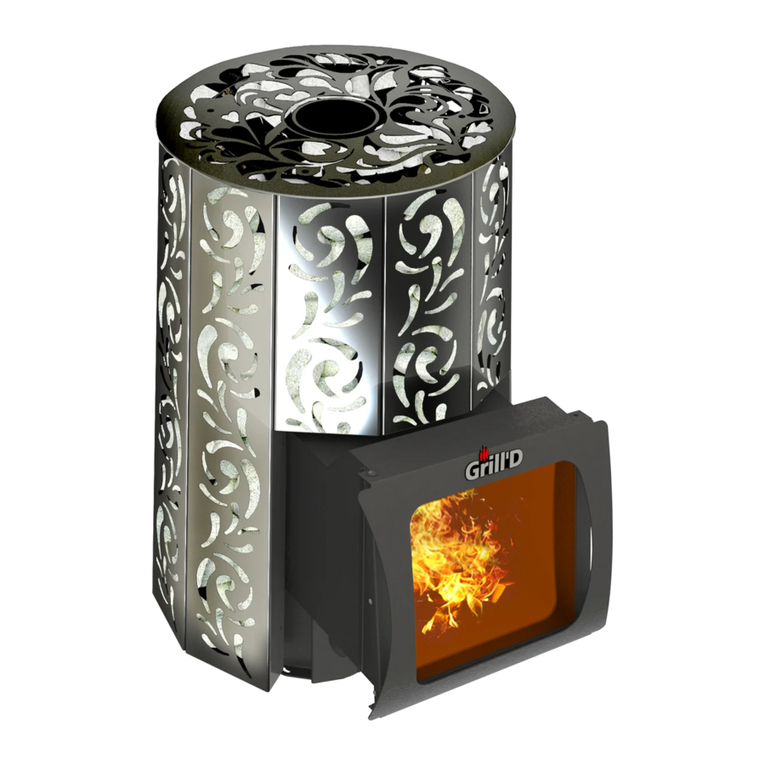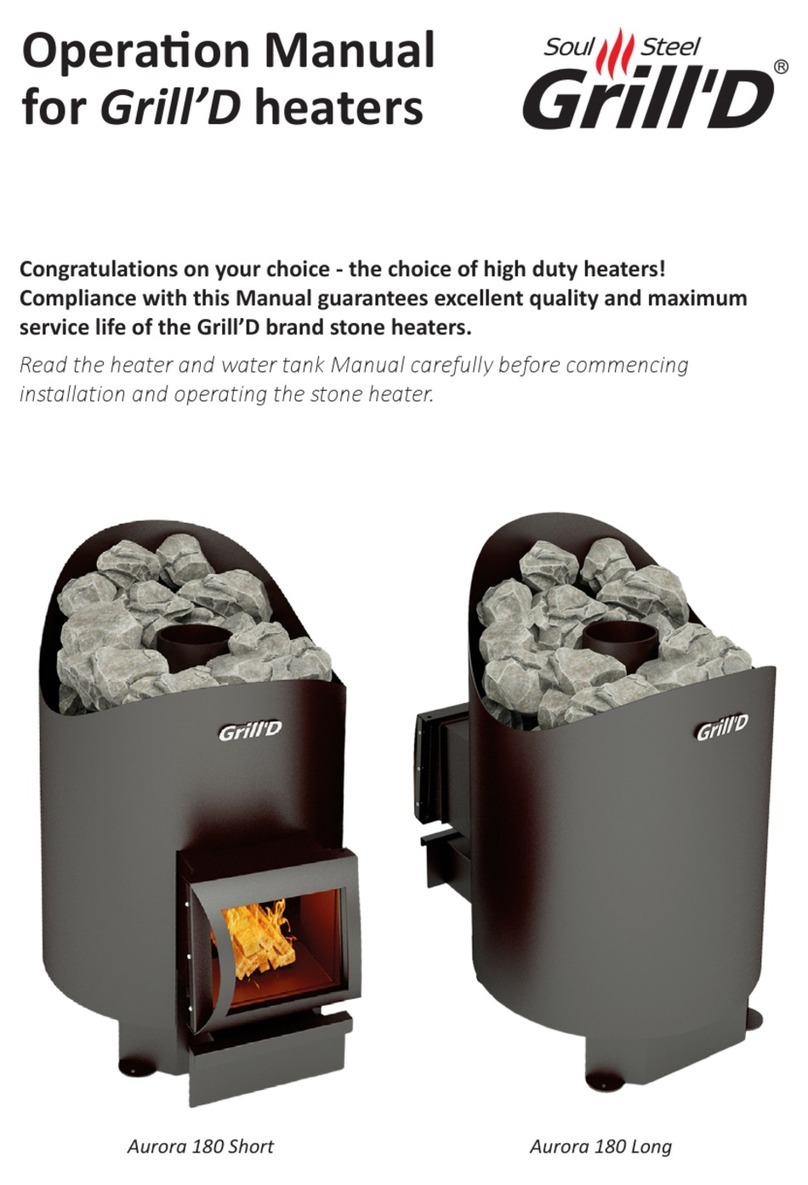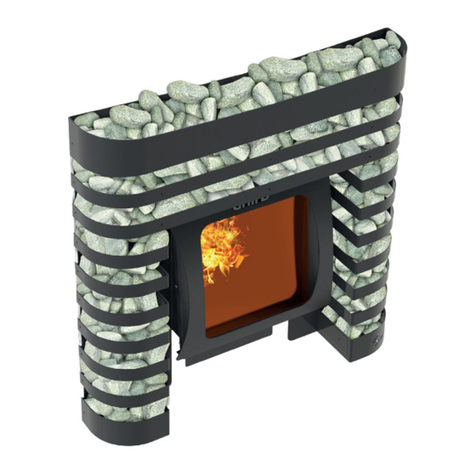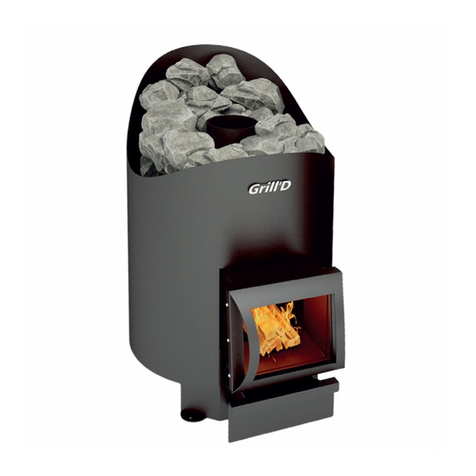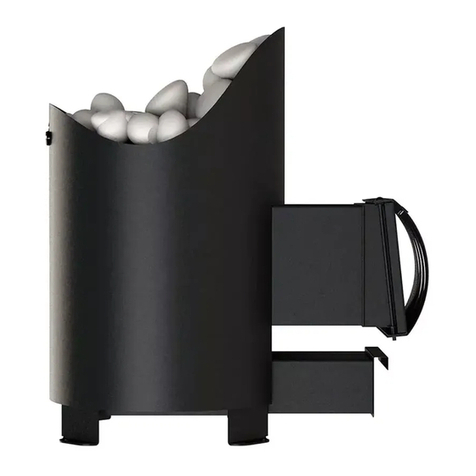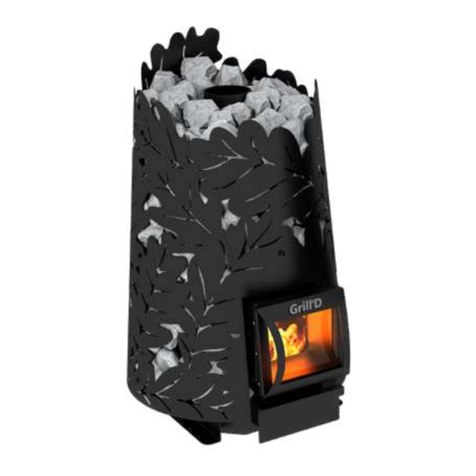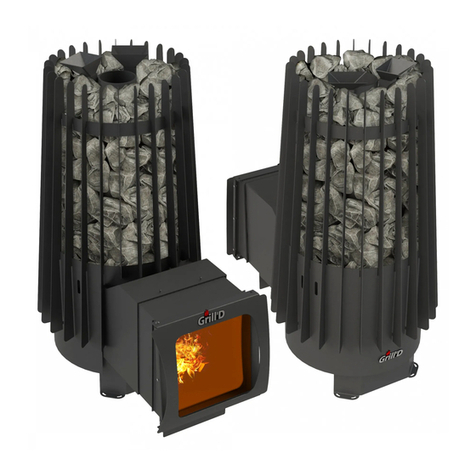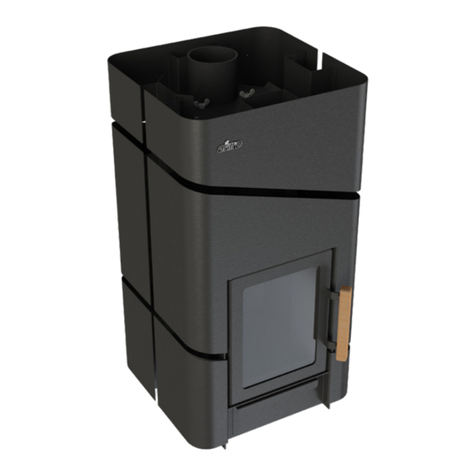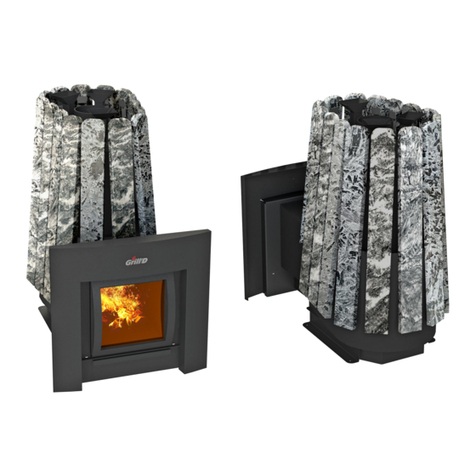
5
2.2. Heater design and operaon
Note: overall view and locaon of the heater main elements are shown in Appendix 2. Internal
design and operaon of the heater is shown in Appendix 3.
Firebox, as well as other crical elements of the heater, is made of corrosion-resistant steel
of AISI 439 grade. Corrosion-resistant steel of AISI 310 grade is used for the above heater
elements in Retro models, which extends heater operaon life signicantly due to enhanced
heat resistance and high-temperature strength.
The eecve design for heang up the stones and the steam room is due to numerous
bends, heat-conducng structural elements, which increase the heat dissipaon area. The
air heang and discharge system allowing to control convecon streams inside the steam
room, as well as heang an adjacent room, also plays a signicant role.
Heater models of Long version are equipped with retractable heang ue and ash drawer that
allow adjusng the length depending on the wall thickness, and also allow ring the heater
from the adjacent room.
Note: dimensions of heaters with a telescopic heang ue are shown in Table 1 and
Appendix 1 as a range of values.
All heater models can be oponally equipped with special reinforcing devices (refer to Appendix
4) made of heat resistant high-alloyed corrosion-resistant steel, that enhance combuson and
addionally protect the heater rebox from destrucon due to exposure to high temperature.
The devices have ducts for supplying addional combuson air, and when it enters the rebox,
the air passes parally above the re into its upper part, where post-combuson of ue gases
occurs. Addional heat is generated during this process, thus enhancing the heater’s eciency.
There is a grate at the boom of the heater (refer to Appendix 4). Ash falls through the sheets
of the grate into the ash drawer, which allows convenient cleaning of the heater without
interrupon of burning. The grate is one of the most thermally loaded parts of the heater, it is
fabricated of high duty rolled steel with a thickness of 5 mm.
The heater rebox door is fabricated of steel and thermal glass. The door opening angle is
sucient for convenient loading of fuel and allows visual monitoring of the burning process due
to the availability of the glass.
The outer surface of the heater is covered with an-corrosion heat- resistant enamel.
IMPORTANT! Unauthorized modicaon of the heater is prohibited. The manufacturer
reserves the right to make modicaons to the design of the heater that do not impair its
consumer properes.
Retro series
Removable lid allows accessing to the inner compartment of the stone heater and also
serves as a steam restricng device. Water is supplied to the inner compartment of the
stone heater through funnels.
The heater allows having a bath house with exible temperature control, and achieving
various steam room modes:
Fine steam mode is a mode for special ultralight steam obtained by pouring water
through the funnels to the inner compartment of the stone heater, the stones in which
are heated up to temperatures above 400 °С, while having a moderate (60-70 °С) steam
room temperature. Owing to the special design, Retro is capable of restoring serviceability
of the inner stone heater aer pouring water (0.5-1 l) onto it, in less than a minute, and
connue operang in ne steam mode. Given the stone heater lid is installed conguously
and the pressure is growing, the steam escapes through a nozzle located on the lid imitang
the singing of blizzard. Hand-formed bricks, used as the heater cladding material, ensures
operaonal safety (precludes the propagaon of IR-radiaon, signicantly reduces the rinks

